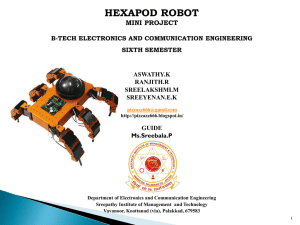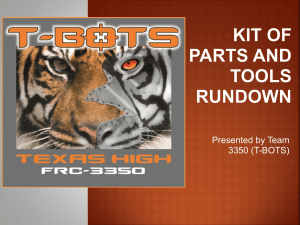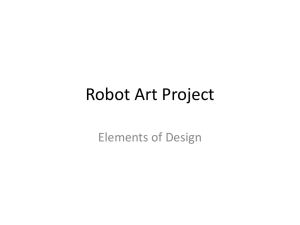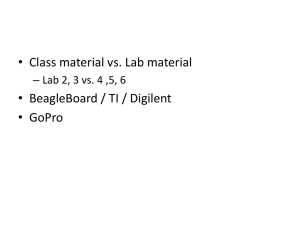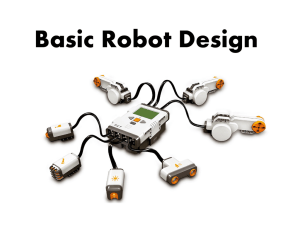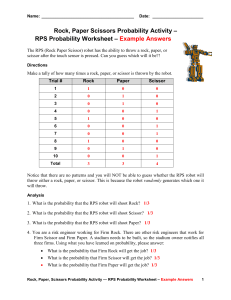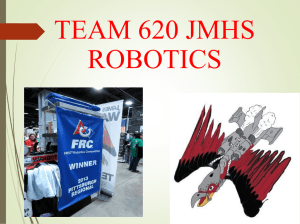RPSGamePPT
advertisement
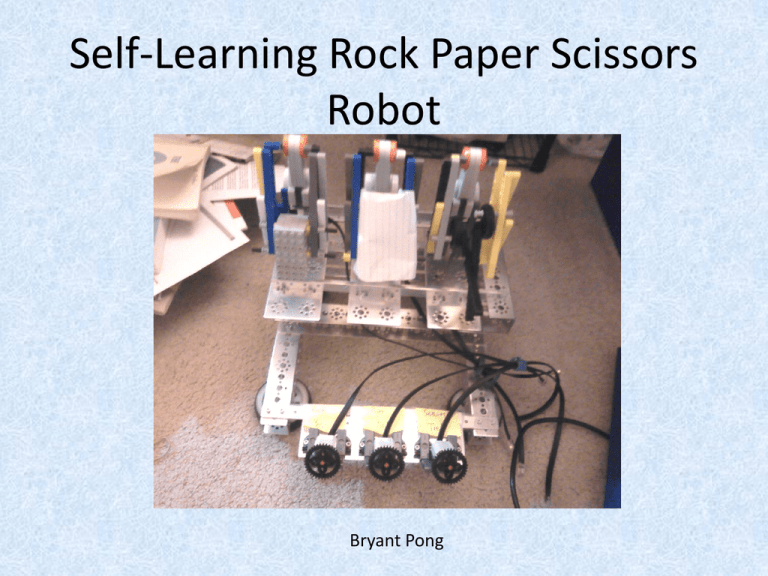
Self-Learning Rock Paper Scissors
Robot
Bryant Pong
Q-Learning Algorithm
Four variables needed (all variables are[0, 1)):
Alpha (learning rate): higher alpha is to 1, robot learns faster, but incorrect
moves will affect the robot more
Gamma (discount factor): higher gamma is to 1, robot will use learned
information rather than performing random moves
Epsilon (probability of a learned action): epsilon starts off at 0.999,
decrements after robot performs a move
Kappa (thoroughness variable): kappa ensures that more accurate values
are recorded for the future
The Robot
• 3 Touch Sensors/3 Motors
Rock (Retracted)
Rock (fully extended)
Decision Making
-
-
Markov Chains
3 x 3 x 3 array (like a Rubik’s cube)
- 1st Dimension: Move Player Made (rock, paper, scissors)
- 2nd Dimension: Move Robot Made (rock, paper, scissors)
- 3rd Dimension: Result (robot won, lost, or tied?)
Array stores probability of success for a given state
How does the robot make a decision?
if(norm_random() > epsilon)
{
//Use learned information
ClearScreen();
TextOut(0, LCD_LINE1, "I'm thinking...");
Wait(1000);
//loop through all possible choices
for(i = 0; i < CHOICES; i++)
{
//use the lookup table to determine what the best
//move to make to counter the player's move
if(qscores[initial_input][i] > max_q_score)
{
//find the move with the highest success rate
//and store if
max_q_score = qscores[initial_input][i];
next_movement = i;
}
}
}
Reward System
if((i == 0 && j == 0) || (i == 0 && j == 2) || (i == 1 && j == 0) || (i == 1 && j == 1) ||
(i == 2 && j ==1) || (i == 2 && j == 2))
{
reward = -10000;
}
//otherwise, the robot must win; reward it with a virtual point!
else
{
reward = 1;
}
How does the reward system work?
• Robot gains virtual points when it wins; loses
10,000 points when it ties/loses
• Example: Give a kid $20 if he can learn to fly
• Kid tries to crawl, walk, run, and jump to fly
• Eventually, kid learns that he cannot fly
• Along the way though, kid learns how to
crawl, walk, run, jump




